Graham Reid | | 7 min read
Rotor Plus: Middle: The Drape of the Curtain
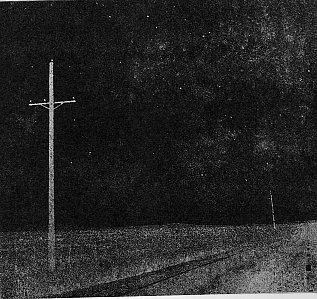
One of the most interesting albums/projects Elsewhere heard last year came from a New Zealand artist who goes under the name Rotor Plus (variously rotor plus, rotor +).
With the release of the album Dust, he completed a trilogy of CDs which were as seductive as they were mysterious.
The music was understated and sometimes barely there, surface noise and found sounds were part of the sonic palette, and the albums all came in booklet covers which were allusive art objects in themselves with suggestions of memory and time lost or passing.
Elsewhere essayed the series in a lengthy article here, and even chose Dust as one of the best albums of 2013.
At some point late last year I sent Rotor Plus the following series of questions by e-mail (we have not spoken by phone or in person) and they seemed to disappear into the ether.
Then just last week the replies came, as considered as the music and answered at the same leisurely and thoughtful pace which saw the trilogy of albums stretch out over a decade.
We are delighted he replied, because it gives us the excuse to point attention to this series again . . .
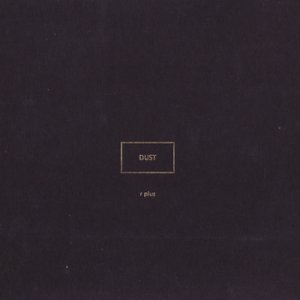 For these albums you have remained
anonymous. Although it is possible to find out what else you've done,
has that lack of a persona appended to the series been important to
you?
For these albums you have remained
anonymous. Although it is possible to find out what else you've done,
has that lack of a persona appended to the series been important to
you?
If so, why?
It was never a particular phenomenon of this album to have anonymity. Nothing I've done under the various personas has had my name on it. Picking up on what you suggest, it takes about 30secs to find out who I am and the various projects I’ve been involved in, so anonymity is not the idea, it’s just the ability to approach the music somewhat uncluttered by personality and context that I like…. even though I know there is a naivety in that idea. The cliché is, “It’s not about me, its about the music” and even though that goes against our evolutionary needs, the cliché seems appropriate. You’ll find out enough about me through the music anyway.
In an e-mail to me you said, “In the effort to create I must put aside the notion that there will ever be an 'audience'. A notion that could pull one away from the journey at hand.” Is it less important for you that this music be heard than it be created.
It is temporal. While creating I need to immerse in doing just that – creating. It’s the creative act enacting the idea that is important, not what comes after it. I must try and be in that space, not some other.
A few years ago I had a particular breakthrough when after starting, finishing, and hating a whole albums worth of music I had to reconsider my process and what was important.
What I decided I needed to do was put aside the “Editor” in my brain, the one that wants to judge and manipulate the creative part. So I refused to judge or edit the music during the creative process, just let the stuff come out and follow the path it reveals. Decide whether its any “good” later on.
That is harder than it sounds.
This approach now generates hundreds of more ideas, literally.
Later I edit and make decisions on quality and aesthetics. There are many tracks that I demoed for “Dust” that didn’t make it for no other reason than they didn’t fit the aesthetics of the album as a whole. They still fit within the rotor plus world, but not that particular moment. That’s a tricky moment to put aside tracks I think are exquisite in order to do what is best for the album itself. Later, much later, I can't ignore that if I choose to release the music then someone else will hear it, but I can't guess at their response (see previous sentence about writing a whole album and throwing it away). I have no control over that, so why worry about it?
Again harder than it sounds, one plus one is an audience.
I often personally position the rotor plus music to be ignored, just somewhere very quiet in the background that is erased by the wind in the roof, a fridge turning on, a thought about why the curtain seems to drape like that ...
So it's often the opposite of active engagement ... only entering the consciousness rarely ... like it's easily forgotten . . . not that it can't be engaged with ... and obviously given the lengths gone to in the physical product it's not “disposable”.
Music as photograph?
Is a field recording less evocative than a photo? (I ask myself)
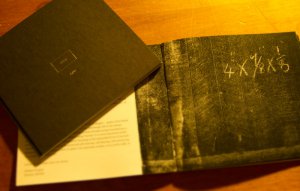 This is a considered a trilogy, but
was it always seen as that by you? When you were working on the first
album did you have a long arc in mind, even then?
This is a considered a trilogy, but
was it always seen as that by you? When you were working on the first
album did you have a long arc in mind, even then?
Yes. I have to do things in threes. There is an obvious self-referential nature in this series given each album has three tracks: beginning, middle, end. Thus Dust is the “end”, and I’m really satisfied with that ending. I was definitely considering the long arc of the series when I started, though I didn’t anticipate that it would take so long. The arc changed a bit given that amount of time involved, but not drastically. (there were only two possible ways to go) I believe if you listen to the CDs in order, in fact even if you just look at the albums, you will see that arc and a strong narrative unfolding. There are a couple of things that are just happy accidents (the text layout on the covers) and many that are very considered ( the spelling of rotor plus for instance, and the place of the piano in the arc).
This series suggests memories of places and things. In that regard is it “personal” in that they are your actual memories? Or are they, for want of a better description, imagined memories?
I’m more interested in the fiction of memory rather than the possibility of recall. Pain is real, the memory of it different. The scar is a reference. I like my memory abstract and amorphous. The memory is not imagined, but the experience becomes so.
I think the dust, the finger prints, the scratches, the marks, all suggest a life before me and a life after, that will only ever now be fictional, so there is a attraction to embedded fiction {{ hmmm...the use of the word "embedded" leads me to think of metadata-- that the old, the physical, has metadata.... some very obvious, in that scratched, marked, worn kind of way…. but impossible to read, so what is one to do? [[I know what I do when I see the hot cup stain on a table and it’s not documentary]] hmmm dramatic fictional documentaries}}
*I was never one to buy something new and put it on a shelf still shrink wrapped.
The metadata that I particularly enjoy, that is hinted at by “memory”, which is the imagining of the "before", the life of those now unseen but not unpresent -- maybe its all ghosts?
I like old photos for that reason.. something captured < that is not what was actually experienced > that windows other lives that have now become a fiction.
* My friend David believes we only remember the photo of the event , not the event. Barthes has some interesting things to say about the photo ... and I particularly like when that fiction gets faint and opaque and one "writes" over it like a palimpsest.
Like we are all scratching and erasing “over” ( and not “away at” ) the past.
I love those photos of deserted and abandoned towns and buildings.. I'm thinking especially of those theaters that are crumbling around the fictions held within them. Perhaps it is just the distance it creates that I like.
The titles you have given the pieces . . . Did some of them (as concepts perhaps more than definitive titles) determine the music or act as prompts for some of them? Or were they suggested later by the music?
Both.
You show attention to detail but did that become obsessive?
When you are moving stuff at the sub 20ms level then you have to be obsessive.
Over the three albums there seems a clear move from detached and minimalist sounds to something more warm and compassionate. Is that a fair interpretation?
At the risk of being flippant, if that’s what you hear then it’s a very fair interpretation. It’s hard to be objective when the senses are involved.
Were these were clearly conceived as art objects right from the start?
There are many problematic ideas around the “art object” but I will say this: Music is, obviously, a temporal phenomenon (one of the reasons soundcloud drives me crazy) whereas the album as an object has a visual and, I believe more importantly, a tactile experience. I don’t think the vinyl “revival” is about what you see, it's about what you touch. The last physical object is an idea worth exploring.
Last one. Where to now? Is rotor+ going to do something more or could we expect you to reappear under yet another name doing something very different?
I'm revisiting one of my other projects at the moment which still needs some answers. I'm also always operating a long list of ideas on scrappy pieces of paper, so one of those may grab the attention. I'm also creating a tour for the Dust album which I hope to get to completion. (It's all about multiple speakers for me these days) I'm obsessed with Mingus at the moment so maybe that will reveal something.
For more on Rotor Plus releases see the website for the magnificently named The Radiophonics Trading Company of New Zealand/Aotearoa here.
Or you can download Dust from bandcamp for $US10 or more. Physical copies of the limited edition CD package are still available ($US20). See here.
.
These Further Outwhere pages are dedicated to sounds beyond songs, ideas outside the obvious, possibiltiies far from pop. Start the challenge here.

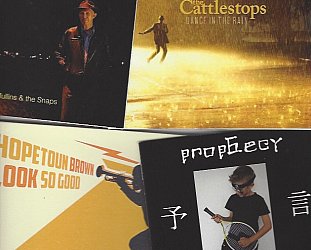

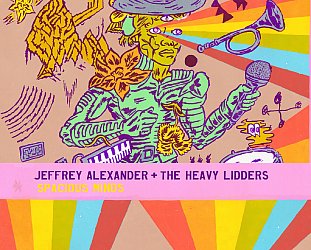
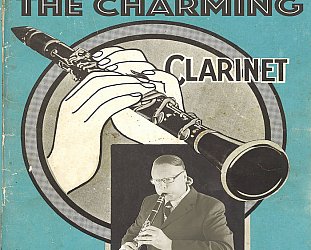
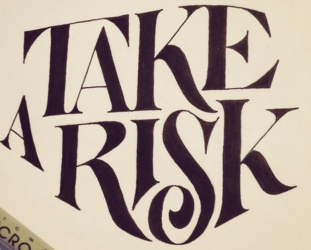
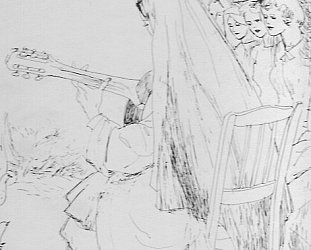
post a comment